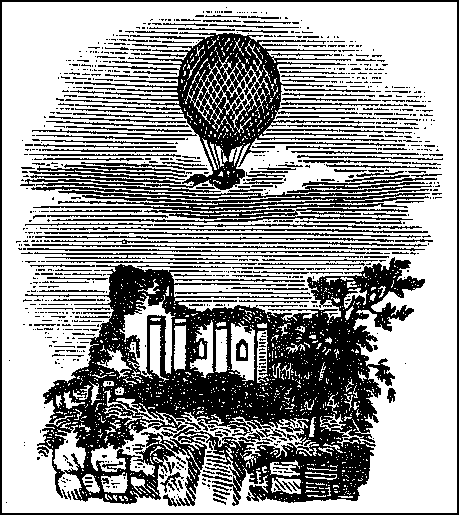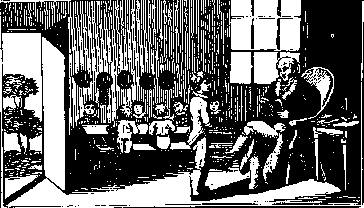Quest for the
True Self
Stephen Cope
(Bantam)
One can easily be put off by the early chapters of Yoga and the Quest for the True Self because Cope has a terrible time getting his motor cranked up and humming. There are too many unbelievable dialogues with friends, such as, for example, when one asks, "Don't you miss your analyst?" he responds,
There's something about how these yogic practices work directly with energy. It's like they bypass the mind, or something. At least the intellect. My mind feels so calm. So focused. More and more, I have the experience of well-being.
Or, when describing those around us who help us to realize our potential,
All human beings who have developed the capacity to be an abiding presence can transfer this capacity in a kind of cellular, visceral way to others who don't have it...They are people who are so full of the river of life that they cannot help transferring it to others.
"The river of life," we would venture, threatens to drown the hapless reader in sheer nonsense.
However, once we get beyond these New Age warblings and into the realities of Yoga practice (and its obvious interconnections with psychotherapy), his writings begin to take hold. Cope's ability to communicate some of the theories of western psychotherapy is exemplary. For example, his summation of the ideas of Freud --- repression, acting out, repetition compulsion --- are more or less cogent, as are his conclusions: "The therapist loans the patient [his or] her observing ego, or, from a yogic point of view, we might say that the therapist loans the patient her witness-consciousness."
Another example, this being Cope's summary of current thinking about the unconscious,
Among the many brilliant insights brought into our culture in this country by psychoanalysis, this is perhaps the simplest, and the most important: Much of mental and emotional life is unconscious. It happens completely outside of our conscious awareness...We can "put away" the lunatic, raging aunts and the sex-obsessed alcoholic uncles of our psychic lives. We can lock them up in the basement of our consciousness. But the more energy we expend in securing the basement door, the more dramatic their appearance will be when they get out. To paraphrase Carl Jung, that which we hold unaware in our unconscious will eventually come to us as fate.
He concludes,
These split-off aspects of our self will appear as strangers, as enemies, as "not us." They will appear as "the hand of God." But one thing is absolutely sure. They will eventually be in our face, and often in the unkindest and most surprising of ways.
Cope dedicated ten years to the study and practice of yoga at Kripalu, but at one point, the school fell apart at the seams because of yet another "sex-obsessed uncle," who, it appears, was the master --- Amrit Desai. It was revealed that behind closed doors the guru had taken on several lovers. Obviously, those involved didn't want to talk; but it came out, and the community went into shock, came close to falling apart. Desai was sent packing, however, and Kripalu survived.
It is a little hard for the outsider to understand why the "weenie dilemma" (common, and commonly seen as) created so many problems for the community outside of the fact that one of the strictest rules had to do with student and faculty chastity. Perhaps you and I will never understand such a process which demands so much of its adherents, a commitment in which unnatural strictures --- like celibacy --- are so vigorously espoused. The weenie will always win, lust will out --- and those who believe otherwise must will always be disabused.
In any event, Cope still works with the newly reconstituted Kripalu Center, and his last chapter, if one ignores his usual ghastly attempts at dialogue (he'll never be another Niel Simon) is a ringing endorsement of, and a worthy gloss on, the message of the Bhagavad Gita. Namely, that "we cannot escape our true nature... love is at the core of all true dharma..." and whatever we do, we must do in the name of the divine:
Through love, Krishna teaches, we rise above the field of opposites, of action and inaction, of nature and spirit, of passion and dispassion, to find a synthesis of them all.
Witold Gombrowicz
Danuta Borchardt,
Translator
(Yale Nota Bene)
 O Grave Lords of the Written Word: I tried, I tried with this one. I read John Updike's heady words ("A master of verbal burlesque...") I read Susan Sontag's Forward: "Masterpiece." "Great literature." "Ferdydurke has floated upward to the literary empyrean."
O Grave Lords of the Written Word: I tried, I tried with this one. I read John Updike's heady words ("A master of verbal burlesque...") I read Susan Sontag's Forward: "Masterpiece." "Great literature." "Ferdydurke has floated upward to the literary empyrean."Perhaps for the critics. There are others of us, however, who might still be down here in the dirt, looking upwards and outwards at the balloon of Gombrowicz's writing, wondering why we can't be floating there too.
The translator's note asks whether Ferdydurke can even be translated into comprehensible English. Maybe for some; maybe for others it would be like getting Ada comfortably into Japanese, or Finnegan's Wake into Finnish. Or maybe it's just me.
I confess, I soldiered on as far as page 91. I followed Joey --- aged thirty-two --- as Professor Pimco kidnaps him and takes him go back to high school, to be in the company of Kneadus, Syphonus, Mizdral, Hopek, Kopyrda, Pylaszczkiewick:
Is the presumptuous Kneadus perchance a ribald? Is Syphonus an idealistus? Noses to our books, let's cram, cram, cram or we'll flunk!
There are shouts, schoolyard pranks, a face contest (who can make the most innocent face; who the ugliest?) There is much back-and-forth over dirty words inscribed in the bark of trees, and in one class a school mate smears ink: "He smeared my hand with ink --- he had already smeared his own and was now starting on mine (because he couldn't very well take off his shoes to smear his feet...)"
 Then there's the Latin class which seems fixated on animis oblatis and passivum futurum conditionalis with a long quote concerning Julius Caesar ("Caesar chastised them for their hot-headedness and greed...") There's much back and forth on the word "pupa, pupa, pupa," which the translator tells us can't be translated:
Then there's the Latin class which seems fixated on animis oblatis and passivum futurum conditionalis with a long quote concerning Julius Caesar ("Caesar chastised them for their hot-headedness and greed...") There's much back and forth on the word "pupa, pupa, pupa," which the translator tells us can't be translated:
It means the buttocks, behind, bum, tush, rump, but not one of these (nor any others that I considered) adequately conveys the sense in which Gombrowicz uses "pupa" in the text.
So be it. I gave up shortly after the author tells us that,
Words, as well as various body parts, will play their part in that reality, but one should not look for an exact connection between the two parts of the said whole; and whoever thinks that by including this story, "The Child Runs Deep in Filidor," my sole aim was not merely filling space on paper and reducing slightly the enormous number of white pages before me, is sorely mistaken.
Just so.
1842 - 1949
The Rise and
Fall of a
Decadent City
Stella Dong
(Morrow)
For a time, the two beggars who occupied the sidewalk in front of the Palace Hotel at the corner of the Bund and Nanking Road were so familiar to Shanghailanders that they had nicknames: one, a man who had driven a nail into the top of his shaven skull --- a nail that held a lighted candle --- was dubbed "Light in the Head," and the other, a woman who cried without pause and so copiously that small pools formed around her hunched body, was called "the Weeping Wonder."
The street urchins would follow Americans down the street, chanting "no mama, no papa, no whiskey soda." The wealthy had parks, it was rumored, with signs that said "No Dogs and Chinese Allowed." The poor worked in silk factories, or warehouses where they produced matches,
There, little children, "some hardly more than babies," related an American reporter, "stood twelve hours a day before trays filled with matches, their small hand working like lightning as they filled match-boxes."
"In addition to these youngsters, toddlers and babies could also be found on the factory premises, because mothers had nowhere else to take their children. Sometimes babies lay sleeping on the floor, looked after by tiny children."
Shanghai came into being because of the opium wars. The Calvanistic English --- with no demurrals from thwe Americans --- decided, in 1842, that it would greatly add to their gross national product if they forced the Chinese to open their doors to the importation and sale of opium. It was all engineered by Jardine, Matheson and Company who, with the compliance of the government, sent "an expeditionary force of sixteen warships, four thousand troops, and 540 guns." They forced the Chinese to pay an indemnity, and, with the second Opium War, legalized the drug which entered China principally through Shanghai.
Opium retail shops and smoking divans "proliferated by the hundreds." The drug trade created Shanghai's astounding prosperity, and the fact that it was governed by three countries --- England, France, and China --- confused jurisdictions, and made tghe city the world center of fast living, prostitution, drugs, gangs, and astounding wealth.
Ms Dong's book has its share of interesting tales. It bogs down in the middle when she tries in vain to separate out the various gangs that ran the city, but descriptions of the atmosphere of the streets, the night life, the astonishing gap between rich and poor, Shanghai 1842 - 1949 makes fascinating reading. Her take on America's favorite tyrant --- Chiang Kai-shek --- make the triumph of the Communists in 1949 inevitable.